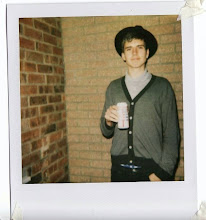I was pointed towards the book Handwritten by Steven Heller & Mirko Ilie, to research into different types of hand rendered type. I had a flick through this and came across these images that I particularly like and filled me with inspiration -

I think the scrawled aspect of the type shown in these images is really effective. It raw and untidy aspects make it appealing to the eye, as at a glance it may just look like a scribble, but it draws you in revealing more.
The amount of text used is also a key factor to it’s effectiveness, and is something that I’m going to have to take into consideration for my designs.

The Nike ACG campaign posters can be related to the extreme sports side of things with the Animal brand. The use of scratchy hand rendered type on the photographs is very effective, and something that I could push forward with on the P.O.S side of things.
The scratchy aspect of the type on this page, also links in with the injuries sustained in extreme sports. The scrapes and cuts can be seen in the text, as well as on the body.

Adding shadow to the type gives it an extra dimension. It makes it stand out and almost monumental compared to the rest of the type. This can be used with type that possibly contains more important information that the rest of the text on the packaging.
There are so many variation of hand rendered type. With a pen you can draw anything, and it’s my responsibility to keep a fluidity to the whole work, without losing the appeal of it being spontaneous.

I felt that a lot of the hand rendered type that I had come across had a sort of a graffiti feel to it, so I decided to have a flick through Street Sketchbook. The following few images are scans from the book. I not only looked at type, but also tried to look for pieces which had a lot going on.
Will Barras’s work is very fluid, full of movement, atmosphere and energy. His sketches whether it is biro or marker look like they have developed into stories. I like this aspect of this work and maybe I could implement something similar in my packaging to make it more exciting, and so the viewer can interact.
Bfree starts off without any idea of what he is doing; the first couple of lines determine the end result. I feel this spontaneity is clearly evident in his work, and is something that I want to try and implement into mine, as it makes the work more exciting.
Blu like Bfree draws without much conscious planning. He often starts by coming up with an anatomical idea or viewpoint to explore, sometimes with a visual pun or message in mind. The idea of using visual puns, i feel could add a humorous twist to my work.
Ekta in his own words: ‘I don’t like knowing too much about what I’m drawing till I’ve drawn it’. Although I can’t completely take that attitude, otherwise I wouldn’t be doing this research
i feel it does have a certain meaning to
it.

Elph’s drawings have a fluidity and spontaneity to them, which I’m strongly realising is a key aspect to a successful illustrative piece. I don’t think I can plan too much as in to what I’m drawing as it will take a certain element away from the final piece.
All of Wayne Horse’s pieces reveal a sense of humour and an awareness of the absurd side of popular culture. I feel that I need to get to know Animal as a brand and my target audience before I sit down and start illustrating; as my awareness will become evident in my work.
Guy McKinley beleives that, ‘If your image is hard to make and looks difficult, I think you can drown a piece’. This is something I need to keep in mind. Even though I want to have a lot going on in my work, I need to be careful that I don’t have too much going on.

Turbo likes to contrast the old with the new. I feel that using old style hand rendered tyoe with new will work well as there will be a big contrast between it all, but will still keep a certain amount of fluidity.
Ponk takes the essentials of graffiti letterforms, such as outlines, shading and highlights and adds his own fresh twist. Even though I want to try and steer a bit away from graffiti, I feel that it is going to be necessary to have a certain element of it within the work as the hand drawn and freestyle aspect of it will bring out my own personal style.
Remed sketches from a library of thoughts and shapes. He usually mixes several sketches and shapes and keeps an element of freestyle when he paints and draws. His ideas develop as words, icons, colours or shapes that begin to form a dialogue as they gradualy build up on the page. This gradual building and layering I feel is going to be needed to produce a successful piece.
Zetka states ‘For graphic design there are no limits and you can work in a more detailed way and take your time designing’. I need to produce a balance of how much I treat my packaging as a piece of graphic design, and a piece of spontaneity.
As with most of the previous artists, Luke Ramseys’ work is full of movement and still has a fluidity to it. He goes onto say, ‘I seldom sketch out my idea before applying the paint. I just let the paint stroke take me where it wants to’.



![[blog of designer and illustrator james mcmorrow]](https://blogger.googleusercontent.com/img/b/R29vZ2xl/AVvXsEgxz4ROutX4LQyqFY7iwyLaHGg5J5uDWu5wp1BsK3ZqniPF7k2j2jr20Ftnv2RfekS_fMeluvnTfDPpO7sTMuBv9Cdxkxw6XItFpNc-ToY5hNx-_uyhaXqrebeF0jX_oJJjyTMOvFFvRcDs/s1600-r/blog_header.gif)















































